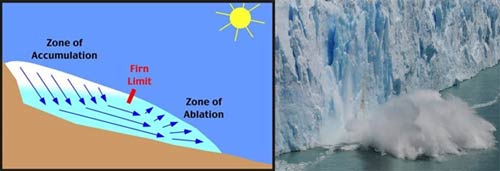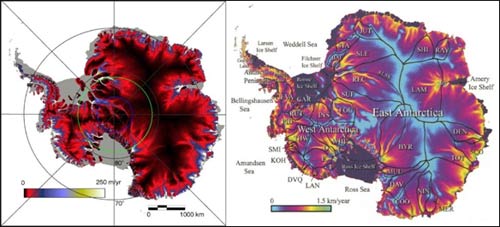
(Figure 1: Midtsdalsbreen, Southern Norway, Personal Photograph)
What The Science Says:
Antarctica is losing ice because its glaciers are speeding up. This is due to melt water lubricating the base of the glaciers and the removal of ice shelves which act as a "speed bump" slowing the glacier flow. The ice shelves are thinning due to warming ocean waters.
Climate Myth: Antarctica is too cold to lose ice
"The real issue is absolute temperatures. Some of the regions in which GRACE claims ice loss in East Antarctica average colder than -30°C during the summer, and never, ever get above freezing. How can you melt ice at those temperatures?" (Steve Goddard)
Glaciers are large viscous masses of ice which creep naturally through a process called internal deformation. This “creep” or movement is caused by gravity and the weight of accumulated snow and ice forcing the ice to deform like plastic.

(Figure 1: Midtsdalsbreen, Southern Norway, Personal Photograph)
Glaciers gain mass through accumulation of snowfall and through re-freezing of meltwater but lose mass (termed ablation) through surface melt, basal melt, sublimation and iceberg calving (Figure 2, right). The accumulation of ice primarily occurs in the glacier’s accumulation zone and ice loss generally originates in the glacier’s ablation zone (Figure 2, left).

(Figure2, accumulation/ablation zones, www.physicalgeography.net, image of calving glacier on right)
For an ideal glacier, ice flow through a cross-section must exactly balance the accumulation and ablation taking place (Benn and Evans, 1998, 142). The difference between the total gains and losses measured over a specified time refers to the mass balance. Mass balance is usually measured over the course of a year which computes the sum of all the annual accumulation and ablation (Benn and Evans, 1998, 75). The velocity at which a glacier moves whereby its Mass Balance is 0 represents the point at which its inputs (through accumulation) equals its outputs (through ablation) and is termed the Balance Velocity (Figure 3).

Figure 3: (Left) Balance Velocities for Antarctica as illustrated in Bamber et al (2009). (Right) Actual velocities across the ice sheet as measured by Rignot and Thomas (2002).
As every individual basin is rarely in balance, the actual velocities of glaciers/ice streams across Antarctica shows that many glaciers have velocities in excess of their balance velocity and many are less than their balance velocities (Figure 3, right).
The question of balance velocities brings us to one of the most important points of this post. When a glacier is in balance or flowing at its balance velocity, net mass will remain balanced. However, when a glacier accelerates while near or at its balance velocity, the outputs resultantly increase but the inputs do not, thereby shifting the glacier regime to one of negative mass balance or net ice loss. This situation is particularly important because accelerated ice flow is the key method through which the Antarctic ice sheets incur a net ice loss. Accelerations such as these occur through two primary mechanisms. The first of which is caused by surface melt water reaching the glacial bed causing basal lubrication therefore reducing the frictional forces at the bed and thus increasing ice flow (Bell 2008).
The second mechanism refers to when the forces at the downstream terminus of a glacier or ice stream are disturbed or altered. This can occur through removing buttressing ice shelves or by shifting the glacier’s grounding line (point where glacier ice reaches floatation). The presence of an ice shelf provides a longitudinal compressive force which slows the flow of ice streams. If removal of this compressive force occurs, velocity of ice streams increase. This has been observed directly by Scambos et al (2004) and Rignot et al (2004) through both visual observations (Scambos) and radar interferometry (Rignot).
In terms of a grounding line retreat, an inland shift of the grounding line causes less backpressure through increased calving and basal melting. This process results in increased glacier velocities and subsequent inland thinning as more ice is being pulled from the accumulation zone (Bell 2008). In a warmer climate, one would expect that surface melting would increase, making the first mechanism more likely, however because of Antarctica’s climate and the omnipresence of ice shelves and calving glaciers there, the second mechanism actually dictates the ice losses from Antarctica. Evidence has already been presented which supports the theory that it is warm ocean water in West Antarctica which is in actuality enabling this second mechanism (Shepherd, Wingham and Rignot, 2002).
We should all now at least remotely understand that mass balance changes in Antarctica aren’t reliant on surface melting but rather depend on dynamic responses such as the 2nd mechanism.
Intermediate rebuttal written by robert way
Update July 2015:
Here is a related lecture-video from Denial101x - Making Sense of Climate Science Denial
Additional videos from the MOOC
Expert interview with Eric Rignot
Expert interview with Isabella Velicogna
 |
The Skeptical Science website by Skeptical Science is licensed under a Creative Commons Attribution 3.0 Unported License. |